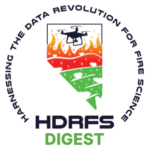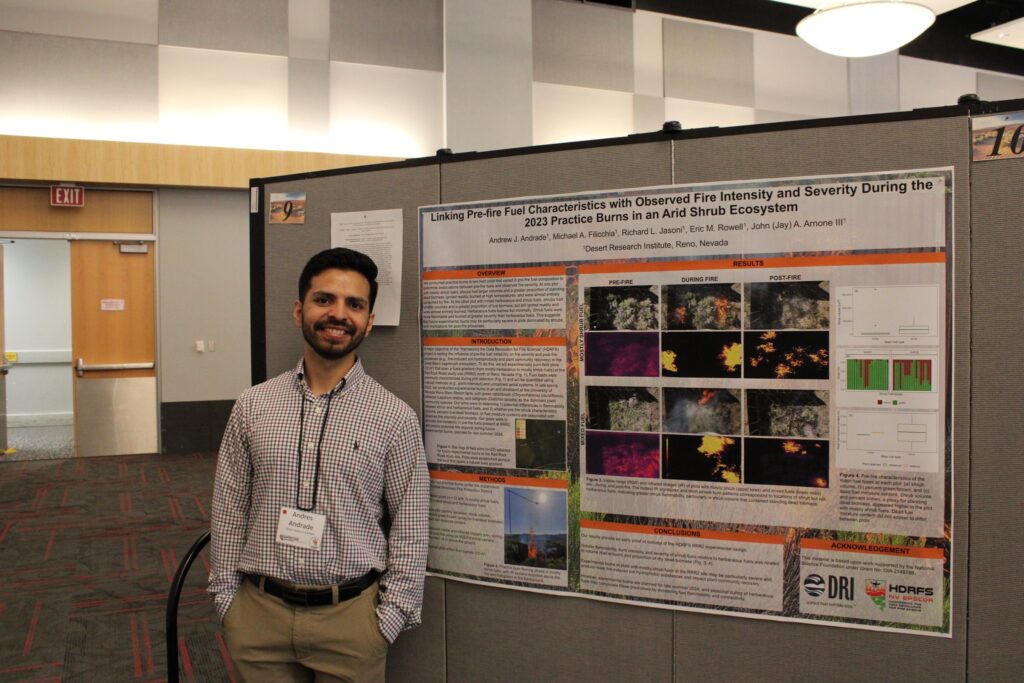The future of fire science: HDRFS students highlight research during poster session
Nearly two dozen early career attendees shared new work on everything from remote sensing to how wildfire smoke impacts human health.
By Amanda Heidt
April 2024

Lots of in-depth discussions took place during the research poster session at the 2024 HDRFS Annual Meeting. (Credit: Mayara Cueto-Diaz)
This year’s HDRFS meeting, held March 18-19 in Las Vegas, Nevada, brought together researchers from across the state, and even as far afield as Germany, to discuss recent progress towards the project’s goals. Component leads shared promising findings from the last year and highlighted upcoming experiments, many of them based at the Red Rocks Road field site just outside Reno.
But senior scientists also made space for their early-career colleagues to walk attendees through new research, including during a poster session held on the first day of the conference. Over the afternoon, undergraduate and graduate students, as well as postdocs, presented work spanning—and sometimes combining—the five HDRFS research components.
Andrew Andrade, a postdoc in the lab of Ecology component lead Jay Arnone at the Desert Research Institute, presented preliminary data using infrared imaging to study how fuel composition can influence burn dynamics and post-fire plant recovery. Last year, the group carried out a series of practice burns in sagebrush plots with varying fuel loads—some dominated by shrubs, and others more varied in their ground cover. As the plots burned, the researchers used infrared to map the heat levels across the burn, giving them insight into the fire’s intensity in near-real time.
“What’s striking was that once the fire was out, we still had all these glowing heat signatures of where the shrubs used to be,” Andrade says, adding that these high-intensity burns could lead to more water-repellent soils or the destruction of underground seed banks. “It’s still preliminary, but we’re now hypothesizing that these heavy fuel plots with lots of shrubs are going to burn particularly hot, which may have important implications for the system’s recovery.”
With the advent of so many tools, other students are similarly developing autonomous arrays that can image the same landscape with multiple sensors at the same time. Prateek Arora, a PhD student in the lab of Cyberinfrastructure Innovations researcher Christos Papachristos at the University of Nevada, Reno, walked viewers through the technology behind DENDrone, an autonomous drone that maps the “digital ecology” of sagebrush ecosystems using GPS, LiDAR, and IMU data, as well as an onboard machine learning model. In preliminary trials, DENDrone was able to produce a three-dimensional map of a field site, and using leaf shape and structure, to distinguish between two species of sagebrush with roughly 90% accuracy.
Another broad theme of the poster session was the imaging and analysis of wildfire smoke, with several posters touching on methods for analyzing smoke’s chemical composition. Eric Schneider, a PhD student in analytical chemistry at the University of Rostock in Germany, shared work conducted in the university’s aerosol chamber, which accelerates the natural aging process that smoke undergoes over time. While benchtop chambers have been used in other HDRFS work, the chamber in Germany is the largest in the world (at 1,800 cubic meters) and can condense the aerosol aging process from weeks down into hours. “We’re starting to get a better sense of how this aging process can make smoke more or less dangerous to human health and climate change,” Schnieder says. “You can see that there’s more and more interest in this topic now that we have the tools to make studying it faster and more reproducible.”
Bianca Martinez, a PhD student at the Desert Research Institute associated with the Fire Admissions and their Atmospheric Aging component, says that traveling to meetings like this one has always been beneficial, both for the chance to practice her outreach and to kickstart new collaborations with researchers in the different components. “HDRFS has been so interdisciplinary from the start,” she says. “We’re working with all these different people, which gives our research more reach than it would ever have if it was just us.”
 Special Issue of HDRFS Digest, a quarterly publication of the Harnessing the Data Revolution for Fire Science Project, which is a five-year research project funded by the National Science Foundation’s Established Program to Stimulate Competitive Research “EPSCoR” (under Grant No. OIA- 2148788) focusing on enabling healthy coexistence with wildland fire and the mitigation of wildfire danger to human life, infrastructure, and the landscape in Nevada and the intermountain western U.S.
Special Issue of HDRFS Digest, a quarterly publication of the Harnessing the Data Revolution for Fire Science Project, which is a five-year research project funded by the National Science Foundation’s Established Program to Stimulate Competitive Research “EPSCoR” (under Grant No. OIA- 2148788) focusing on enabling healthy coexistence with wildland fire and the mitigation of wildfire danger to human life, infrastructure, and the landscape in Nevada and the intermountain western U.S.


 Acknowledgement: This material is based upon work supported by the National Science Foundation under Grant No. OIA- 2148788.
Acknowledgement: This material is based upon work supported by the National Science Foundation under Grant No. OIA- 2148788.